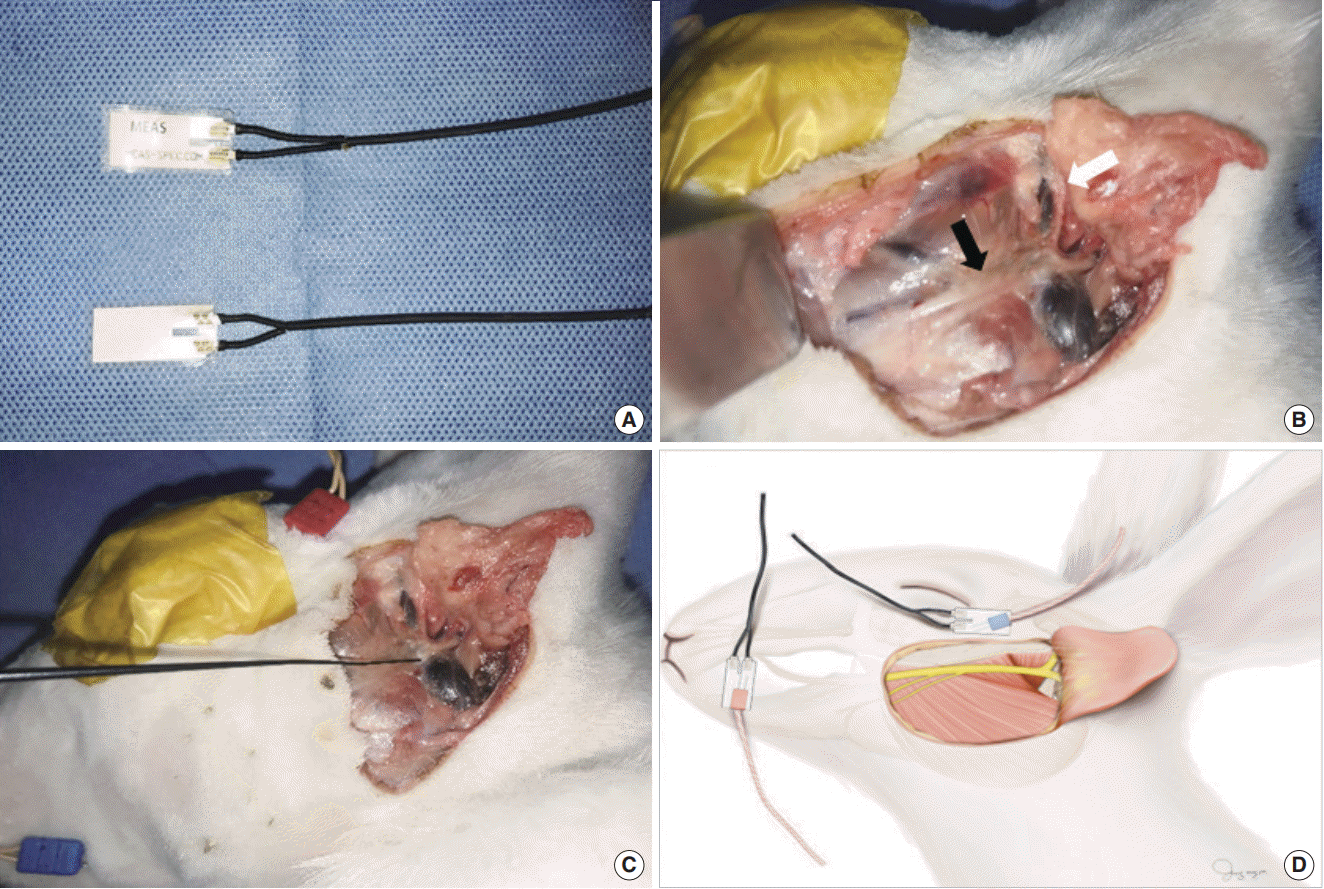1. Ryzenman JM, Pensak ML, Tew JM Jr. Facial paralysis and surgical rehabilitation: a quality of life analysis in a cohort of 1,595 patients after acoustic neuroma surgery. Otol Neurotol. 2005; May. 26(3):516–21.
2. Lydiatt DD. Medical malpractice and facial nerve paralysis. Arch Otolaryngol Head Neck Surg. 2003; Jan. 129(1):50–3.

3. Eisele DW, Wang SJ, Orloff LA. Electrophysiologic facial nerve monitoring during parotidectomy. Head Neck. 2010; Mar. 32(3):399–405.

4. Meier JD, Wenig BL, Manders EC, Nenonene EK. Continuous intraoperative facial nerve monitoring in predicting postoperative injury during parotidectomy. Laryngoscope. 2006; Sep. 116(9):1569–72.

5. Laccourreye H, Laccourreye O, Cauchois R, Jouffre V, Menard M, Brasnu D. Total conservative parotidectomy for primary benign pleomorphic adenoma of the parotid gland: a 25-year experience with 229 patients. Laryngoscope. 1994; Dec. 104(12):1487–94.
6. Dulguerov P, Marchal F, Lehmann W. Postparotidectomy facial nerve paralysis: possible etiologic factors and results with routine facial nerve monitoring. Laryngoscope. 1999; May. 109(5):754–62.

7. Witt RL. Facial nerve function after partial superficial parotidectomy: an 11-year review (1987-1997). Otolaryngol Head Neck Surg. 1999; Sep. 121(3):210–3.

8. Upton DC, McNamar JP, Connor NP, Harari PM, Hartig GK. Parotidectomy: ten-year review of 237 cases at a single institution. Otolaryngol Head Neck Surg. 2007; May. 136(5):788–92.

9. Grosheva M, Klussmann JP, Grimminger C, Wittekindt C, Beutner D, Pantel M, et al. Electromyographic facial nerve monitoring during parotidectomy for benign lesions does not improve the outcome of postoperative facial nerve function: a prospective two-center trial. Laryngoscope. 2009; Dec. 119(12):2299–305.

10. Lowry TR, Gal TJ, Brennan JA. Patterns of use of facial nerve monitoring during parotid gland surgery. Otolaryngol Head Neck Surg. 2005; Sep. 133(3):313–8.

11. Sood AJ, Houlton JJ, Nguyen SA, Gillespie MB. Facial nerve monitoring during parotidectomy: a systematic review and meta-analysis. Otolaryngol Head Neck Surg. 2015; Apr. 152(4):631–7.

12. Sung ES, Lee JC, Shin SC, Kwon HG, Kim MS, Kim DJ, et al. Development of a novel intraoperative neuromonitoring system using a surface pressure sensor to detect muscle movement: a rabbit model study. Clin Exp Otorhinolaryngol. 2019; May. 12(2):217–23.

13. Olsen KD, Daube JR. Intraoperative monitoring of the facial nerve: an aid in the management of parotid gland recurrent pleomorphic adenomas. Laryngoscope. 1994; Feb. 104(2):229–32.
14. Lopez M, Quer M, Leon X, Orus C, Recher K, Verges J. Usefulness of facial nerve monitoring during parotidectomy. Acta Otorrinolaringol Esp. 2001; Jun-Jul. 52(5):418–21.
15. Makeieff M, Venail F, Cartier C, Garrel R, Crampette L, Guerrier B. Continuous facial nerve monitoring during pleomorphic adenoma recurrence surgery. Laryngoscope. 2005; Jul. 115(7):1310–4.

16. Terrell JE, Kileny PR, Yian C, Esclamado RM, Bradford CR, Pillsbury MS, et al. Clinical outcome of continuous facial nerve monitoring during primary parotidectomy. Arch Otolaryngol Head Neck Surg. 1997; Oct. 123(10):1081–7.

17. Grosheva M, Guntinas-Lichius O. Significance of electromyography to predict and evaluate facial function outcome after acute peripheral facial palsy. Eur Arch Otorhinolaryngol. 2007; Dec. 264(12):1491–5.

18. Anon JB, Lipman SP, Guelcher RT, Sibly DA, Thumfart W. Monitoring the facial nerve during parotidectomy. Arch Otolaryngol Head Neck Surg. 1991; Dec. 117(12):1420.

19. Empis de Vendin O, Schmartz D, Brunaud L, Fuchs-Buder T. Recurrent laryngeal nerve monitoring and rocuronium: a selective sugammadex reversal protocol. World J Surg. 2017; Sep. 41(9):2298–303.

20. Harper CM, Daube JR. Facial nerve electromyography and other cranial nerve monitoring. J Clin Neurophysiol. 1998; May. 15(3):206–16.

21. Haenggeli A, Richter M, Lehmann W, Dulguerov P. A complication of intraoperative facial nerve monitoring: facial skin burns. Am J Otol. 1999; Sep. 20(5):679–82.
22. Sung ES, Lee JC, Shin SC, Kwon HK, Na HS, Park DH, et al. Development of a novel intraoperative neuromonitoring system using an accelerometer sensor in thyroid surgery: a porcine model study. Clin Exp Otorhinolaryngol. 2019; Nov. 12(4):420–6.






 PDF
PDF Citation
Citation Print
Print





 XML Download
XML Download